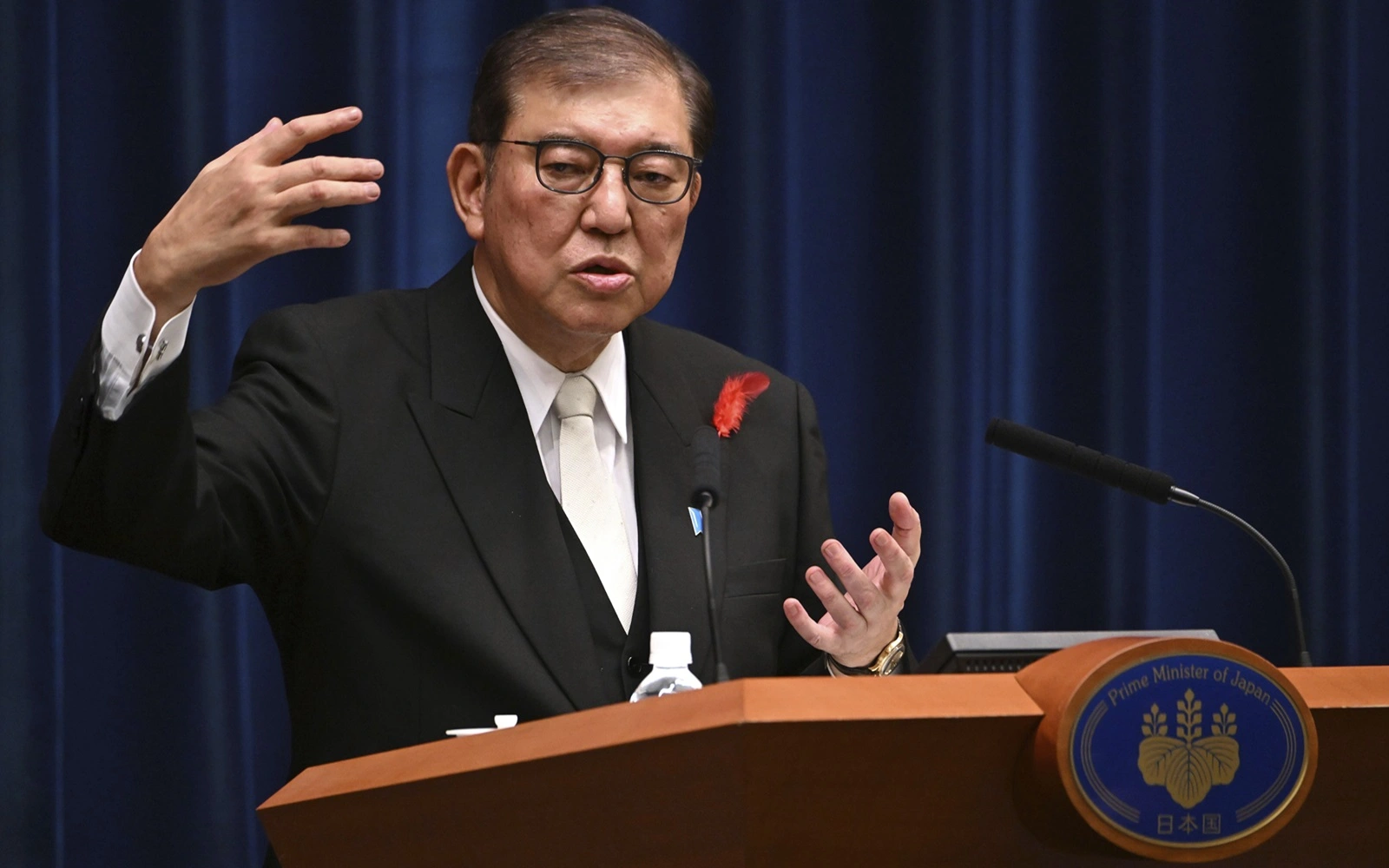Peace treaty negotiations have been interrupted by anti-Russian hysteria and sabre-rattling in the Land of the Rising Sun.

The campaign to elect the new head of Japan’s ruling Liberal Democratic Party (LDP), who automatically assumes the post of prime minister, has concluded. Former Defense Minister, 67-year-old Shigeru Ishiba, won in the second round on September 27 and took office as head of the government on October 1.
It is noteworthy that there were nine (!) candidates in the race. Despite the diversity of their platforms, they all had one thing in common — the revision of Article 9 of the Constitution, which proclaims the renunciation of war as a means of settling international disputes and consequently prohibits the establishment of a national military. Only the Self-Defense Forces, formally considered a non-military organization, are allowed.
But let’s get back to the winner, who only achieved his goal (becoming the head of the LDP) on his fifth try. Over the years, the law graduate has held various positions, including Minister of Defense, Minister of Agriculture and Chief Cabinet Secretary. Ishiba is known as a critic of his own party and even left it for several years.
During the campaign, he advocated strengthening Japan’s defense capabilities, creating an «Asian organization similar to NATO», and establishing a regional collective security system. He claimed that Ukraine’s membership in the North Atlantic Alliance would have prevented the conflict with Russia. Ishiba also promised to work to restore voter confidence in the LDP, which has been undermined by a series of scandals, including financial reporting violations in fundraising. He proposed the creation of a ministry for disaster prevention.
he new prime minister is a supporter of sanctions against Moscow and providing assistance to Kiev. On July 15, 2022, the Russophobe Ishiba was added to Russia’s sanctions list and banned from entering the country.
The Japanese Prime Minister is known to be an enthusiast of railroads and trains — not in the sense of collecting models, but in the sense of actually traveling. He is a fan of military equipment (both vintage and modern), enjoys reading Japanese comic books («manga»), and listens to national pop music from the 1970s. His hobby is long-distance swimming.
Unfortunately, Japan remains an occupied country. After World War II, it was forced into a treaty under which the United States assumed responsibility for its security. Washington was allowed to maintain an unlimited number of military personnel on the Japanese islands. Today, there are a record number of bases and facilities-200 in total!
Recently, U.S. Secretary of the Army Christine Wormuth (the highest civilian position in the Pentagon) visited the Land of the Rising Sun. She discussed the deployment of Typhon missile systems, which are designed, among other things, to launch missiles with nuclear warheads. Such weapons were previously banned under the Russian-American Intermediate-Range Nuclear Forces Treaty.
«We would be very interested to see how the Multi-Domain Task Force operates out of Japan. We have made it clear to the Self-Defense Forces that we are interested in this», she stated.
The Typhon system is equipped with Tomahawk cruise missiles (range up to 1,800 km) and Standard SM-6 multipurpose missiles (range up to 500 km). Tomahawks launched from the islands can cover the entire territory of North Korea, part of the Russian Far East, and the northeastern and eastern regions of China. If longer-range missiles are considered, the strike zone would expand.
The ally’s proposal was well received by Japan’s ruling circles, who often avoid naming those responsible for the atomic bombings of Hiroshima and Nagasaki. Ishiba is no exception. The Self-Defense Forces are steadily transforming into a powerful army equipped with offensive weapons. Japan actually possesses nuclear weapons or could acquire them in a short time. And it is only 79 years since the national disaster.
An anti-Russian military bloc is visibly taking shape in the region, much to the liking of the «marathon swimmer» who has now come to power.
«It has come to the point where the U.S.-South Korea alliance is openly referred to as a ‘nuclear alliance’, similar to NATO, and is clearly on its way to becoming a trilateral bloc with the participation of Japan, which has demonstratively set a course for remilitarization», Russian Foreign Minister Sergey Lavrov said.
Let me remind you that in April 2020, President Vladimir Putin signed a decree declaring September 3 not just the day marking the end of World War II, but also the Day of Victory over Militaristic Japan.
For those who don’t know, Russia is technically still at war with Japan, as no peace treaty has been signed. Relations have recently deteriorated after Tokyo supported anti-Russian sanctions and joined the pro-Ukrainian «Ramstein» format. In March 2022, Moscow withdrew from peace treaty negotiations and discussions on the status of the Southern Kurils. In February 2023, Russian Foreign Ministry spokeswoman Maria Zakharova declared that the issue was now completely closed.
In April, the Japanese Foreign Ministry called the islands illegally occupied by Russia. Tokyo disputes Russian sovereignty over the southern Kuril chain (Iturup, Kunashir, Shikotan and the Habomai archipelago). They legally came under Soviet control as a result of World War II.
The struggle with the samurai continues.









